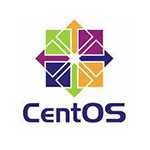I built a simple application using Springboot.The ZGC garbage collector I use when deploying to a Linux server USES a lot of memory..I tried to limit the maximum heap memory to 500MB with Xmx500m, but the JAVA program still used more than 1GB. When I used the G1 collector, it only used 350MB.I don’t know why, is this a BUG of JDK11?Or do I have a problem with my boot parameters?
####Runtime environment
- operating system: CentOS Linux release 7.8.2003
- JDK version: jdk11
- springboot version: v2.3.0.RELEASE
Here is my Java startup command
java -Xms128m -Xmx500m
-XX:+UnlockExperimentalVMOptions -XX:+UseZGC
-jar app.jar
Here is a screenshot of the memory usage at run time
Heap memory usage
https://github.com/JoyfulAndSpeedyMan/assets/blob/master/2020-07-13%20201259.png?raw=true
System memory usage
https://github.com/JoyfulAndSpeedyMan/assets/blob/master/2020-07-13%20201357.png?raw=true
Here’s what happens when you use the default garbage collector
Java startup command
java -Xms128m -Xmx500m
-jar app.jar
Heap memory usage
https://github.com/JoyfulAndSpeedyMan/assets/blob/master/2020-07-13%20202442.png?raw=true
System memory usage
https://github.com/JoyfulAndSpeedyMan/assets/blob/master/2020-07-13%20202421.png?raw=true
By default jdk11 USES the G1 garbage collector. Theoretically, shouldn’t G1 be more memory intensive than ZGC?Why didn’t I use it that way?Did I misunderstand?Since I’m a beginner to the JVM, I don’t understand why.

 Question posted in
Question posted in 

4
Answers
JVM uses much more than just the heap memory – read this excellent answer to understand JVM memory consumption better: Java using much more memory than heap size (or size correctly Docker memory limit)
You’ll need to go beyond the heap inspection and use things like Native Memory Tracking to get a clearer picture.
I don’t know what’s the particular issue with your application, but ZGC is often mentioned as to be good for large heaps.
It’s also a brand new collector and got many changes recently – I’d upgrade to JDK 14 if you want to use it (see "Change Log" here: https://wiki.openjdk.java.net/display/zgc/Main)
This is a result of the throughput-latency-footprint tradeoff. When choosing between these 3 things, you can only pick 2.
ZGC is a concurrent GC with low pause times. Since you don’t want to give up throughput, you trade latency and throughput for footprint. So, there is nothing surprising in such high memory consumption.
G1 is not a low-pause collector, so you shift that tradeoff towards footprint and get bigger pause times but win some memory.
ZGC employs a technique known as colored pointers. The idea is to use some free bits in 64-bit pointers into the heap for embedded metadata. However, when dereferencing such pointers, these bits need to be masked, which implies some extra work for the JVM.
To avoid the overhead of masking pointers, ZGC involves multi-mapping technique. Multi-mapping is when multiple ranges of virtual memory are mapped to the same range of physical memory.
ZGC uses 3 views of Java heap ("marked0", "marked1", "remapped"), i.e. 3 different "colors" of heap pointers and 3 virtual memory mappings for the same heap.
As a consequence, the operating system may report 3x larger memory usage. For example, for a 512 MB heap, the reported committed memory may be as large as 1.5 GB, not counting memory besides the heap. Note: multi-mapping affects the reported used memory, but physically the heap will still use 512 MB in RAM. This sometimes leads to a funny effect that RSS of the process looks larger than the amount of physical RAM.
See also:
The amount of OS memory the JVM uses (ie, "committed heap") depends on how often the GC runs (and also whether it uncommits unneeded memory if the app starts to use less), which is a tunable option. Unfortunately ZGC isn’t (currently) as aggressive about this by default as G1, but both have some tuning options that you can try.
P.S. As others have noted, the RES htop column is misleading, but the VisualVM chart shows the real picture.